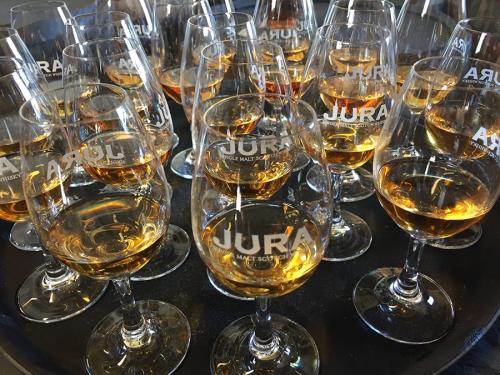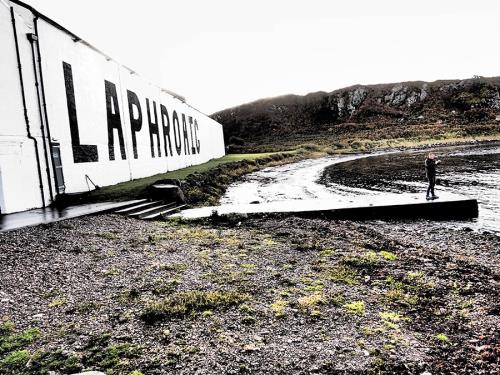Get to grips with the regions - A guide to Scotland's great whisky regions
There is a great diversity to Scotch whisky and the flavors can go in many diametrically opposed directions. Each region has its own unique characteristics and style, so there's something for everyone.
Perhaps your whisky journey has just started and you're struggling to make sense of the myriad of terms and regions, or maybe you want to be able to identify the origin of a whisky by smell and taste alone. This post can help you on the right path.
First of all, it's important to emphasize that the world of whisky is not so black and white. Many typical characteristics can overlap across regions and many distilleries often experiment with alternative bottlings. Nevertheless, each region has its own distinctive characteristics. This post will explore these in more detail.
Highland
The Highlands is by far the largest region on the map, as it encompasses both the Speyside region (Aberlour, Benromach etc.), the North Orkney Islands (Highland Park, Scapa), the Western Islands region (Talisker, Torabhaig etc.).
Classic Highland whisky
Classic Highland whisky will often be aged primarily in ex-bourbon casks, virgin oak casks, or European oak casks, with a finish in a sherry cask. In some cases, a proportion of the barley malt is smoked, although rarely above 10-20 ppm (parts per million phenol.)
A whisky that, according to this writer, represents a classic Highland flavor is Glenmorangie 18 year old. This is the writer's experience:
- Fresh aromas of citrus, orchard fruit, vanilla, and freshly ground black pepper.
- A soft taste of vanilla, honey, fresh orange, roasted barley malt, and oak.
- A medium dry finish where the black pepper returns, along with vanilla and a hint of coffee.
Speyside Whiskey
When we move into speyside whisky, it is often here that a strong sherry influence is allowed to shine. A speyside whisky is often aged in different sherry casks, with the most commonly used being Olorosso sherry casks and PX (Pedro Ximenez) casks. Ex-bourbon casks are also often used as in a classic Highland whisky.
Olorosso sherry casks give a dark, spicy and nutty nuance to the whisky, and PX casks give a strong sweetness and fruitiness to the whisky. In the 1960s, a little smoke was often used during the production of Speyside whisky, but today only a few Speyside distilleries (for example Benromach) that use this method.
A whisky that, according to this writer, represents a classic Speyside taste is the Glenallachie 15 year old. This is the writer's experience:
- Powerful aromas of sherry, nuts, cream and vanilla.
- A wonderful taste of hazelnuts, almonds, caramel, prunes, and cinnamon.
- A medium-long finish of dark chocolate, Christmas spices and Olorosso.

Icelandic whisky
Island whisky is a broad term for whisky produced on small islands off the coast of Scotland. It's a broad term and encompasses many different distilleries. If we start from the northwest and northern island groups, we find Talisker and Highland Park. Talisker primarily uses ex-bourbon casks, whereas Highland Park also makes extensive use of sherry casks (in addition to ex-bourbon). What they both have in common is that they use smoke, a balanced and controlled smoke, preferably with a slightly higher ppm level than the classic Highland whisky uses.
A whisky that, according to this writer, represents a classic Icelandic flavor is Talisker 57 North. (Whisky.dk 649.-) This is the writer's experience:
- A strong aroma of bell pepper, salt water, honey, and freshly ground black pepper.
- A strong taste of chili, campfire smoke, salt water, and lemon.
- A relatively short finish where the wood smoke and oak remain.
Islay
Islay The region produces the whiskies that make your chest hair grow and your beard grow. This is where the most heavily smoky whiskies are born, and is the type of whisky that divides spirits enthusiasts the most. It is primarily ex-bourbon that is used, and in many cases, the whisky is not barrel-aged as long as Highland whisky, for example. Ppm levels often exceed 50 ppm and are therefore considered 'heavily peated whisky'. The distilleries are located on the west coast of Scotland, where the balsty weather creates great turbulence in the North Atlantic Ocean, giving the whisky a strong maritime expression. By far the most famous Islay distilleries are the 3 south coast distilleries; namely Ardbeg, Lagavulin, and Laphroaig. Although these 3 distilleries are close to each other, they still present their own interpretation of Islay whisky.
Ardbeg characterized by a strong campfire smoke and vanilla.
Lagavulin characterized by a strong vegetal peat smoke.
Laphroiag is characterized by a strong medicinal smoke note.
A whisky that, according to this writer, represents a classic Islay flavor is Ardbeg Corrywreckan. (Whisky.dk 749.-) This is the writer's experience:
- A beautifully balanced aroma of campfire smoke, saddle leather, seaweed, and vanilla
- A strong flavor of campfire smoke, banana, dates, pipe tobacco, and seaweed
- A long aftertaste of coffee, dark chocolate, peat smoke, with the pipe tobacco lingering long after consumption.
Campbeltown
Campbeltown is located south of the Islay region, and shares some similarities, such as a maritime smoky expression. However, Campbeltown whisky is very much its own, as a wide variety of casks are often used in production, including sherry casks. Campbeltown is one of the smallest regions in terms of production, as there are currently only 3 active distilleries. In the Campbeltown region you will find Springbank, Glengyle, and Glen Scotia distilleries. Springbank produces Hazelburn, Longrow and of course Springbank whiskies and is a favorite among many whisky connoisseurs. It is difficult to name a classic cask ageing type for the Campbeltown region, as a wide variety of cask types are often used. For example, Springbank 12 Cask Strength is always aged in new experimental casks for each bottling.
A whisky that, according to this writer, represents a classic Campeltown flavor is the Hazelbrun 10 year (Whisky.dk 599.-) This is the writer's experience:
- A mild aroma of papaya, sea air, cardamom, and honey
- A well-balanced palate of honey, lemon zest, leather, and tobacco.
- A long dry finish that offers toasted oak, lemon zest and almond oil.
Lowland
Lowland whisky is, of course, produced in the lower reaches of Scotland and is often recognized by a light, balanced, and slightly vegetal taste. In the old days, all Lowland whisky was triple distilled, but today only the Auchentoshian distillery uses this method. Triple distillation produces a mild and refined råsprit, but also a råsprit without the more 'rancid' nuances.
An incredibly large proportion of the whisky produced in the Lowland region is used for blends. In fact, the largest distillery in the Lowland region, Alisa Bay, primarily produces whisky that is used in blends. However, there are still a lot of decent single malts to be found in the Lowland region.
A whisky that, according to this writer, represents a classic Lowland flavor is the Auchentoshan 18 year old (Whisky.dk 769.-) This is the writer's experience:
- A lovely aroma of green apples, spices, and lime.
- A mild and pleasant taste of vanilla, honey, green tea, and herbs.
- A medium dry, spicy finish that offers barley malt, mild smoke, and fruit.
All in all, there are many exciting possibilities as you move across Scotland's beautiful whisky regions. It is hoped that this guide will help the new whisky adventurer along the way.
